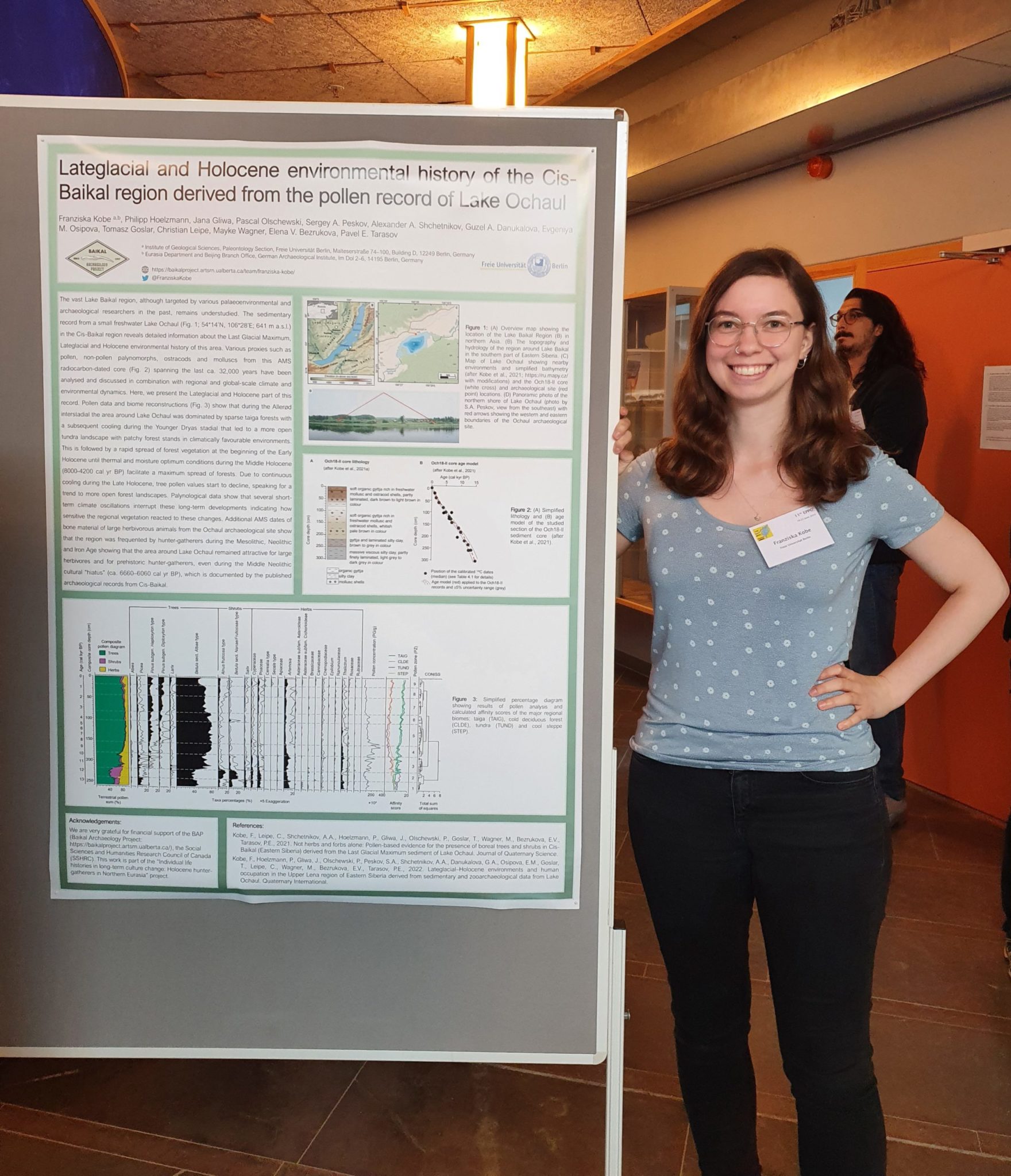Dr. Franziska Kobe recently presented a poster at the European Palaeobotany and Palynology Conference (EPPC) in Stockholm held June 19-22, 2022.
https://jirango.com/cms/web/4b67cbd5?&lang=eng
Message from Franziska: I visited Stockholm from June 18 to 23 to participate at the 11th European Palaeobotany and Palynology Conference to meet colleagues, to learn and to present my own work. It was a unique experience meeting so many other palynologists and to have lots of inspiring talks about their and my work. I received numerous helpful suggestions and overall – had a great time.
Title: Lateglacial and Holocene environmental history of the Cis-Baikal region derived from the pollen record of Lake Ochaul
Abstract: The vast Lake Baikal region, although targeted by various palaeoenvironmental and archaeological researchers in the past, remains understudied. The sedimentary record from a small freshwater Lake Ochaul (Fig. 1; 54°14’N, 106°28’E; 641 m a.s.l.) in the Cis-Baikal region reveals detailed information about the Last Glacial Maximum, Lateglacial and Holocene environmental history of this area. Various proxies such as pollen, non-pollen palynomorphs, ostracods and molluscs from this AMS radiocarbon-dated core (Fig. 2) spanning the last ca. 32,000 years have been analysed and discussed in combination with regional and global-scale climate and environmental dynamics. Here, we present the Lateglacial and Holocene part of this record. Pollen data and biome reconstructions (Fig. 3) show that during the Allerød interstadial the area around Lake Ochaul was dominated by sparse taiga forests with a subsequent cooling during the Younger Dryas stadial that led to a more open tundra landscape with patchy forest stands in climatically favourable environments. This is followed by a rapid spread of forest vegetation at the beginning of the Early Holocene until thermal and moisture optimum conditions during the Middle Holocene (8000-4200 cal yr BP) facilitate a maximum spread of forests. Due to continuous cooling during the Late Holocene, tree pollen values start to decline, speaking for a trend to more open forest landscapes. Palynological data show that several short-term climate oscillations interrupt these long-term developments indicating how sensitive the regional vegetation reacted to these changes. Additional AMS dates of bone material of large herbivorous animals from the Ochaul archaeological site show that the region was frequented by hunter-gatherers during the Mesolithic, Neolithic and Iron Age showing that the area around Lake Ochaul remained attractive for large herbivores and for prehistoric hunter-gatherers, even during the Middle Neolithic cultural “hiatus” (ca. 6660–6060 cal yr BP), which is documented by the published archaeological records from Cis-Baikal.
Authors: Franziska Kobe, Philipp Hoelzmann, Jana Gliwa, Pascal Olschewski, Sergey A. Peskov, Alexander A. Shchetnikov, Guzel A. Danukalova, Evgeniya M. Osipova, Tomasz Goslar, Christian Leipe, Mayke Wagner, Elena V. Bezrukova, Pavel E. Tarasov
Photos from Franziska!
Pic 1: Me presenting my poster about our latest results (see abstract)
Pic 2: Buffet dinner at the famous Stockholm City Hall where the banquet is held after the Nobel Prize bestowal!
Pic 3: Adorable barnacle geese that were everywhere in Stockholm
Pic 4: Replica of the Vasa ship that sank 20 minutes after setting sail for the first time in 1628





